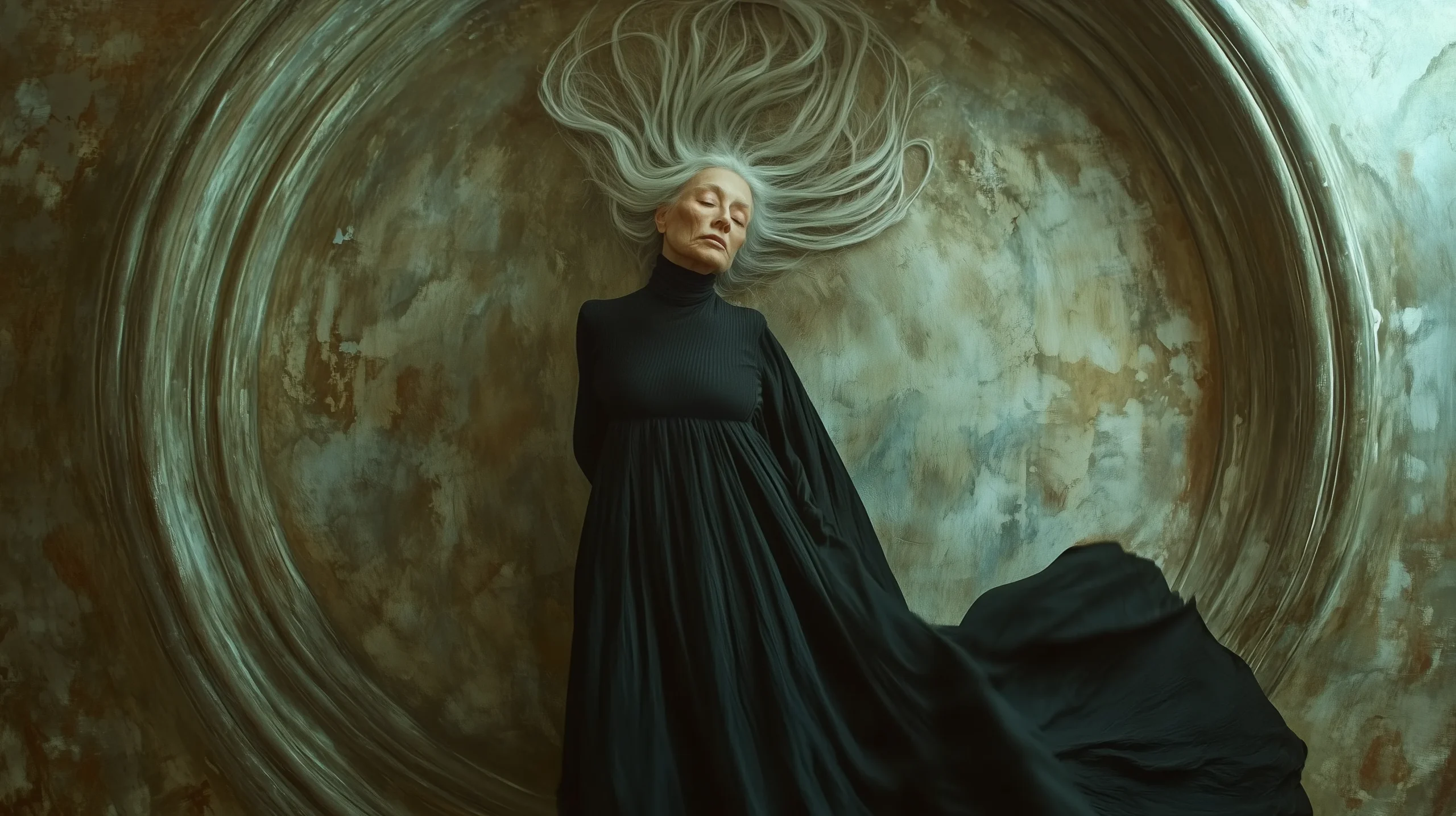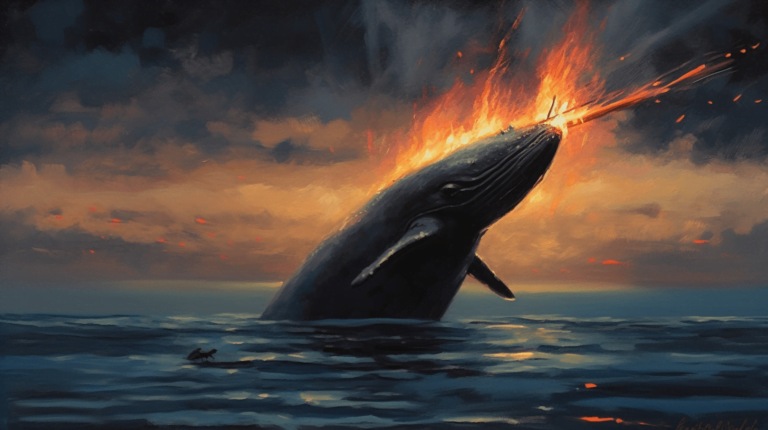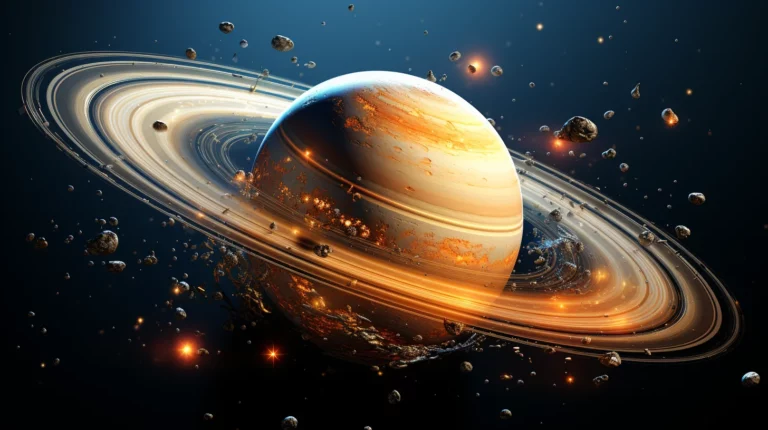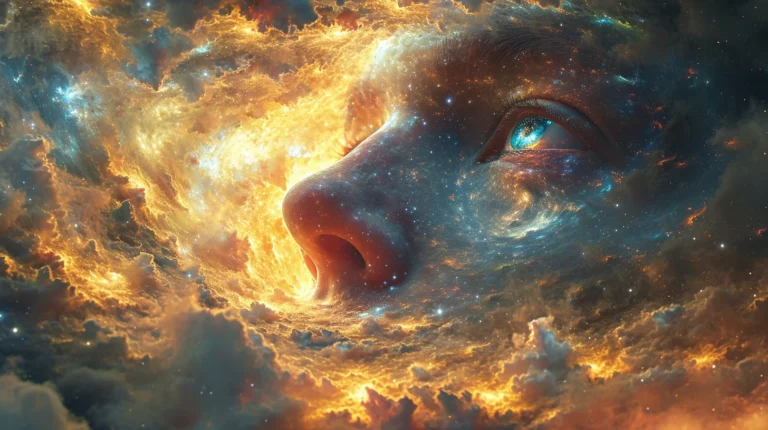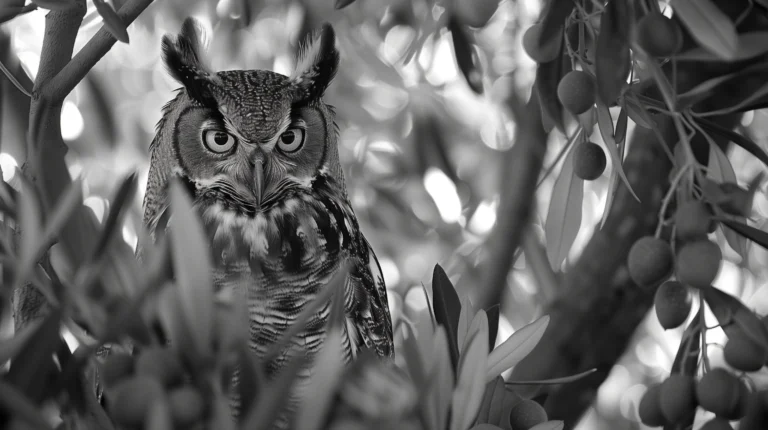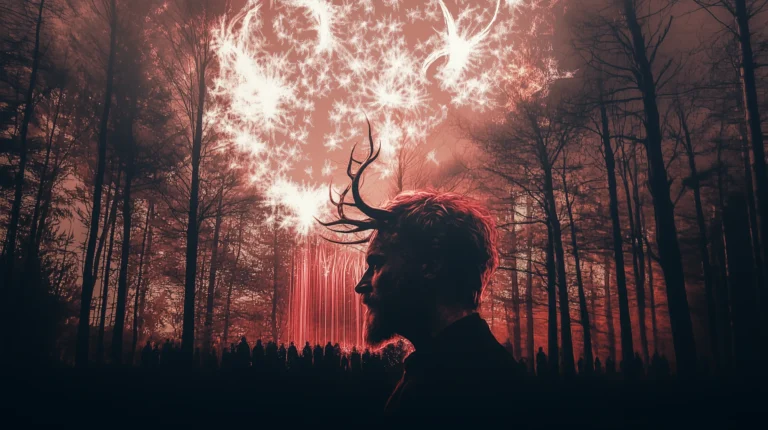Baba Yaga’s Wisdom and the Hermaphrodite’s Alchemy: A Journey into Inner Singularity
Preface
In the hidden depths of our psyche, where shadows and light intertwine, lie the keys to our transformation.
This guide invites you to explore these depths, guided by ancient symbols that challenge conventional thinking and open the door to a new frequency of existence.
Baba Yaga, the fearsome crone of Slavic lore, leads you into the wild forest of your subconscious, daring you to confront what you’ve long avoided.
The Hermaphrodite, an ancient symbol of unity, guides you toward the integration of your inner opposites—light and dark, masculine and feminine.
This journey is more than an exploration of myth and psychology; it is an invitation to shift your consciousness, to transcend the ordinary and step into a higher state of awareness.
“The eternal mystery of the world is its comprehensibility.”
-Albert Einstein
By embracing the lessons of Baba Yaga and the Hermaphrodite, you can tune into a frequency where fear, guilt, and division dissolve into harmony and unity.
As Gurdjieff said,
“Man has no individual I. But there are, instead, hundreds and thousands of separate small ‘I’s, very often entirely unknown to each other, never coming into contact, or on the contrary, hostile to each other, mutually exclusive and incompatible.”
This guide will help you navigate these conflicting parts of yourself, leading you toward the wholeness that lies beyond them.
In the words of Thomas Mann,
“It is a strange, but indisputable fact that it is our pain that brings us most closely into touch with reality, that is, with life itself.”
This guide offers no easy answers, but it does offer a path—a way to embrace all aspects of your being and shift into a new way of seeing and being in the world.
Are you ready to step beyond the known, to meet Baba Yaga and the Hermaphrodite on the path to singularity?
The journey awaits, and with it, the chance to unlock a new frequency of life—where the impossible becomes possible, and you become whole.
Whispers of the Ancient Forest
In the shadowed groves of Slavic lore, where twilight dances between the known and the mysterious, dwells the formidable figure of Baba Yaga.
She is the wind’s murmur through the birch trees, the creak of ancient bones, and the cackle that reverberates in the depths of the untamed wilderness.
To journey towards understanding her is to embark on a path that meanders through the heart of the human psyche, confronting both our deepest fears and our most profound yearnings.
Baba Yaga, often depicted as the archetypal witch, dwells in a hut that pirouettes on chicken legs, encircled by a fence adorned with the skulls of the unwary.
Yet, beneath this macabre facade lies a fabric woven with threads of wisdom, initiation, and transformation. As the writer Carl Jung once said,
“One does not become enlightened by imagining figures of light, but by making the darkness conscious.”
Baba Yaga embodies this process of bringing the hidden into the light, guiding us through the dark forests of our own consciousness.
Her origins trace back to times immemorial, echoing through the annals of Eastern European folklore.
She is the guardian of the threshold, the keeper of the liminal space between life and death, chaos and order, the mundane and the mystical.
“Between the worlds,” Baba Yaga seems to whisper, “lies the truth that binds them together.”
Historically, Baba Yaga’s tales have oscillated between portrayals of a malevolent hag and a wise matron. To some, she embodies the terrors that lurk in the unknown; to others, she is a guide, challenging the seeker to shed their naivety and emerge reborn.
Her narratives serve as parables, urging us to confront the shadows within and embrace the transformative power they hold. As Joseph Campbell once noted,
“The cave you fear to enter holds the treasure you seek.”
Baba Yaga’s domain is that very cave, filled with the treasures of self-discovery.
As we delve deeper into this guide, let us approach Baba Yaga not merely as a figure of folklore but as a spiritual archetype.
She beckons us to traverse the dense forests of our consciousness, to face the trials she presents, and to uncover the latent potentials that lie dormant within.
Embrace the journey, for in understanding Baba Yaga, we may come to understand facets of ourselves long forgotten.
In her ancient wisdom lies the key to reclaiming the wholeness that we seek, for as Baba Yaga might say,
“Only by embracing the shadow can we step fully into the light.”
Embracing the Shadows
In the depths of the forest, where the wild things grow untamed and free, there lives a crone with iron teeth and a heart as ancient as the earth itself.
Baba Yaga, the mysterious witch of Slavic lore, is often feared for her fearsome appearance and her harsh trials.
But beneath this macabre facade lies a being who embodies the true light—one born not in sin or guilt, but in the acceptance of all facets of life.
She is a mirror, reflecting the parts of ourselves we often hide away—the parts that need love the most. As Carl Jung once said,
“Your visions will become clear only when you can look into your own heart. Who looks outside, dreams; who looks inside, awakes.”
Baba Yaga does not deny the darkness; she embraces it, for she understands that the darkness is the real light.
She refuses to accept the notion of being born in sin, of carrying guilt for simply existing. Instead, she embodies the totality of life—its light and shadow, its beauty and terror.
In her presence, we are stripped bare, left only with our essence.
It is in this raw state that we discover the depth of our strength, the richness of our soul, and the boundless capacity we have for love—especially the love we must offer ourselves. As Friedrich Nietzsche once said,
“God is dead. God remains dead. And we have killed him. Yet his shadow still looms. How shall we comfort ourselves, the murderers of all murderers? What was holiest and mightiest of all that the world has yet owned has bled to death under our knives; who will wipe this blood off us? What water is there for us to clean ourselves?”
Baba Yaga knows that self-love is not about purification or cleansing but about acceptance.
She teaches us that to truly love ourselves, we must embrace every aspect of our being—the light and the dark, the sinner and the saint.
She is not the doer; she is the mirror, reflecting our true nature and challenging us to see ourselves without judgment.
Baba Yaga’s forest is not just a place of shadows; it is a sanctuary for those parts of ourselves we deem unworthy, unloved, and unlovable.
The twisted trees and the whispering winds are reminders that even in the darkest corners of our soul, there is beauty and wisdom waiting to be found.
Baba Yaga invites us to enter this forest, not to conquer it, but to make peace with it. As Victor Frankl observed,
“Between stimulus and response, there is a space. In that space is our power to choose our response. In our response lies our growth and our freedom.”
She teaches us that self-acceptance begins not by turning away from our flaws, but by embracing them.
In her eyes, the wrinkles and scars we carry are not marks of shame but symbols of the life we have lived, of the battles we have fought and survived.
She shows us that the journey to self-love is not about perfection; it is about wholeness. As Leonard Cohen famously wrote,
“There is a crack in everything, that’s how the light gets in.”
To love oneself, we must embrace every part of our being—the light and the dark, the smooth and the rough.
When Baba Yaga sets her trials before us, she does so not to punish, but to reveal. She challenges us to see our true selves, beyond the masks we wear and the stories we tell.
In her presence, we are stripped bare, left only with our essence. It is in this raw state that we discover the depth of our strength, the richness of our soul, and the boundless capacity we have for love. As Friedrich Nietzsche once said,
“He who has a why to live can bear almost any how.”
Baba Yaga’s wisdom lies in her understanding that self-love is not a destination but a journey—a journey that winds through dark forests and over rocky paths.
It is a journey of accepting every step we take, every stumble and fall, and recognizing the beauty in our own resilience. As Lao Tzu said,
“A journey of a thousand miles begins with a single step.”
In the forest of our being, Baba Yaga invites us to walk with her, to sit by her fire, and to listen to the stories she tells—the stories of our lives, filled with both sorrow and joy.
In accepting ourselves fully, we find that we are not only worthy of love but are love itself.
Baba Yaga Within
Baba Yaga stands before us, both fearsome and awe-inspiring. Her wild, unkempt hair cascades like dark rivers, her iron teeth gleam in the dim light, and her piercing eyes seem to see straight into our souls.
As we gaze upon Baba Yaga, a recognition awakens in our psyche—the shadowy aspects of ourselves that we often push away.
She is not just a figure of folklore; she embodies the parts of ourselves we fear to confront—the anger, guilt, shame, and unhealed wounds.
“The shadow is a moral problem that challenges the whole ego-personality, for no one can become conscious of the shadow without considerable moral effort.”
-Carl Jung
To invoke Baba Yaga within us is to summon these hidden aspects into the light, where they can no longer be ignored.
But why do we resist the Baba Yaga within? Why do we fear her so intensely? Is it because she reflects our imperfections, the raw emotions we struggle to control?
She represents the chaos within us, the parts that don’t fit neatly into the roles we play or the masks we wear.
She is the wild, untamed, unapologetically real self that we often deny. And this is terrifying.
“Man is not what he thinks he is, he is what he hides.”
-André Malraux
Why do we hate the parts of ourselves that Baba Yaga brings to light? Why do we reject our shadows? Perhaps it is because they strip away the illusions we have built about who we are.
They force us to confront the guilt festering in the corners of our soul—the guilt of not being enough, of making mistakes, of harboring dark thoughts and unkind feelings.
Baba Yaga does not allow us to hide behind pretense or denial. She demands that we face the truth, however uncomfortable it may be.
“We must be willing to let go of the life we planned so as to have the life that is waiting for us.”
Joseph Campbell
Yet, in this confrontation lies the seed of transformation. Baba Yaga is not here to destroy us but to guide us toward wholeness.
She teaches us that the path to self-acceptance is through embracing every aspect of our being, including the parts we despise.
The anger, the fear, the guilt—these are not enemies to be vanquished but wounded parts of ourselves that need compassion and healing.
“To confront a person with his shadow is to show him his own light.”
-Carl Jung
This light that Jung speaks of is the anima and animus—the inner feminine and masculine aspects of the psyche.
According to Jung, the anima is the feminine side of a man, while the animus is the masculine side of a woman.
These elements represent our true inner nature, the soul that exists beyond the masks we wear and the roles we play. They are the key to understanding the depths of our being and the forces that drive us.
When we deny these aspects—when a man rejects his anima or a woman her animus—we create a rift within our psyche.
This denial leads to shadow projections, where the disowned parts of ourselves are projected onto others, causing disturbances in our relationships and inner world. As Jung noted,
“The encounter with the shadow is the ‘apprentice-piece’ in the individual’s development… that with the anima is the ‘master-piece.’”
Embracing the anima and animus is essential for psychological balance. The anima, with its qualities of intuition, emotion, and receptivity, enriches a man’s life by connecting him to his deeper feelings and unconscious desires.
The animus, characterized by logic, reason, and assertiveness, provides a woman with strength, direction, and the ability to stand firm in her convictions. These aspects must be loved and integrated, for only then can we achieve wholeness.
If a man harbors hatred or resentment toward women, it often reflects an inner conflict with his anima—the feminine aspect within him that he has not fully accepted or integrated.
Similarly, if a woman despises men, it suggests a struggle with her animus—the masculine energy that she resists acknowledging.
This inner discord manifests outwardly as prejudice and hostility, but it is, at its core, a battle within the psyche.
To become a true magician of one’s own life, one must transcend these petty conflicts, letting go of the ego’s need to dominate or suppress.
By embracing and harmonizing these inner aspects, we can ascend beyond superficial judgments and achieve a state of wholeness and spiritual growth.
Jung also said,
“The anima is not the soul in the dogmatic sense. It is the archetype of life itself.”
By accepting and loving these inner aspects, we begin to heal the division within ourselves, transforming shadow projections into sources of growth.
Our psyche becomes a unified whole, no longer disturbed by the conflicts that arise from rejecting parts of our own soul.
This integration is not just a personal triumph but a step toward deeper connection with others, as we begin to see beyond the shadows and recognize the shared humanity in everyone.
What would happen if we stopped running from our shadows? Who would we be if we embraced the fullness of our being, without judgment or shame?
Baba Yaga invites us to see that our darkness can be a source of wisdom, that our flaws can teach us resilience and strength. She challenges us to ask,
“Who am I behind all these masks? Why do I resist the parts of myself that need love the most?”
When we accept Baba Yaga within, we begin to see her not just as a symbol of fear, but as a symbol of love—fierce love that demands honesty, tough love that pushes us to grow.
“The curious paradox is that when I accept myself just as I am, then I can change.”
-Carl Rogers
She reminds us that we are not alone in our struggles; others, too, carry their own shadows. In this shared experience, we can find connection and support.
Baba Yaga can be a force for division if we allow fear to drive us into further denial and self-loathing.
But she can also be a force for unity if we embrace her as a guide on the journey to self-discovery.
She teaches us that by accepting ourselves, we can better accept others, fostering a deeper unity.
“You are not a drop in the ocean. You are the entire ocean in a drop.”
-Rumi
So, let us no longer fear the Baba Yaga within. Let us welcome her as a teacher, guiding us back to our true selves.
In her presence, we find the courage to embrace our shadows, to release guilt, and to step into the fullness of who we are.
Through this acceptance, we move toward a deeper unity—within ourselves and with the world around us—built not on perfection, but on the understanding and love that comes from embracing all that we are.
Hermaphrodite
The Hermaphrodite, a figure that has captivated the human imagination for centuries, is a symbol rich with meaning, steeped in myth, and deeply intertwined with psychological, philosophical, and spiritual traditions.
Originating from ancient Greek mythology, the Hermaphrodite is named after Hermaphroditus, the offspring of Hermes and Aphrodite.
According to legend, Hermaphroditus was a strikingly beautiful youth who was merged with the nymph Salmacis, resulting in a being that was both male and female, embodying the union of opposites.
“The meeting of two personalities is like the contact of two chemical substances: if there is any reaction, both are transformed.”
-Carl Jung
In alchemical tradition, the Hermaphrodite represents the sacred union of the masculine and feminine principles, often referred to as the coniunctio.
This union is not merely physical but symbolic of a deeper spiritual and psychological process.
Alchemists saw the Hermaphrodite as the ultimate goal of their work—a state of wholeness where the dualities of life are reconciled.
The Hermaphrodite stands as a symbol of the Great Work, the process of achieving inner balance and spiritual enlightenment.
This transformation is psychological, signifying the unification of the divided aspects of the psyche.
When the inner splits are healed and the tensions within the mind dissolve, a profound shift occurs.
The individual begins to align with the universal flow, experiencing a deep sense of harmony and wholeness, where personal and cosmic consciousness merge into a seamless state of being.
“That which is Below corresponds to that which is Above, and that which is Above corresponds to that which is Below, to accomplish the miracle of the One Thing.”
-Hermes Trismegistus
Philosophically, the Hermaphrodite challenges the rigid binaries that often define our understanding of the world.
It embodies the idea that true wisdom lies not in choosing between opposites but in integrating them.
The Hermaphrodite is a reminder that within each of us exists a blend of qualities—strength and vulnerability, logic and intuition, action and receptivity.
“Out beyond ideas of wrongdoing and rightdoing there is a field. I’ll meet you there.”
-Rumi
To achieve psychological balance, we must recognize and embrace these dual aspects of our nature.
Psychologically, Carl Jung explored the concept of the Hermaphrodite through his work on the anima and animus. Jung believed that each individual carries within them both masculine and feminine qualities.
The Hermaphrodite, in this context, represents the integration of these qualities, leading to a more complete and harmonious self.
It is through the reconciliation of these inner opposites that one can achieve individuation, the process of becoming one’s true self.
“Wholeness is not achieved by cutting off a portion of one’s being, but by integration of the contraries.”
-Carl Jung
Spiritually, the Hermaphrodite is a symbol of unity and transcendence. It represents the divine androgyny that transcends earthly distinctions.
In many spiritual traditions, the Hermaphrodite is revered as an image of the divine—an entity that exists beyond the dualities of male and female, embodying the oneness of all creation.
This spiritual wholeness is a state of being that many seekers strive for, recognizing that the true nature of the divine encompasses all aspects of existence.
“You are the universe in ecstatic motion.”
-Rumi
In the context of our exploration of Baba Yaga, the Hermaphrodite stands as a powerful symbol of the psychological union that must occur within us.
Before any external manifestation of wholeness can be realized, the inner reconciliation of opposites—the light and the dark, the wild and the wise—must be complete.
Baba Yaga challenges us to confront and accept our shadows, while the Hermaphrodite teaches us to integrate these aspects with our light.
This union is not about physical merging, but a deep psychological process that must precede any outward transformation.
If we bypass this inner work, we risk repeating the cycle of shame, guilt, and self-rejection, which Baba Yaga warns against.
Whatever form our inner Baba Yaga takes, it is essential to accept her fully, to embrace all parts of ourselves with an open heart.
“One must still have chaos in oneself to be able to give birth to a dancing star.”
-Friedrich Nietzsche
By allowing this psychological process to unfold, we heal not only ourselves but also contribute to the healing of the universe.
Progress on this journey requires love—for self and others—and an acceptance that paves the way for true miracles to occur.
With courage and compassion, we can move forward together, free from fear, embracing the fullness of who we are and who we can become.
The Journey to Singularity
As we reach the conclusion of this guide, it’s time to delve into the profound concept of singularity, a term often associated with the mysterious heart of a black hole, where all known laws of physics break down, and where time and space cease to exist as we understand them.
Singularity represents a point of infinite density, a place where opposites converge and distinctions dissolve.
In this unfathomable space, everything that was once separate becomes one.
“The eternal quest of the human being is to shatter his loneliness.”
-Norman Cousins
In the context of our journey with Baba Yaga and the Hermaphrodite, singularity serves as a powerful metaphor for the ultimate goal of psychological and spiritual integration.
Just as a black hole pulls everything into its center, leading to singularity, our inner journey is about drawing together the disparate parts of ourselves—the light and the dark, the masculine and feminine, the conscious and unconscious—into a unified whole.
“At the center of your being you have the answer; you know who you are and you know what you want.”
-Lao Tzu
Baba Yaga, with her wisdom born from the depths of shadow, and the Hermaphrodite, symbolizing the sacred union of opposites, both guide us toward this inner singularity.
They remind us that the journey is not about escaping the darkness or rejecting parts of ourselves, but about embracing and integrating all aspects of our being.
This process leads us to a point where the dualities we once perceived—good and evil, light and dark, male and female—are transcended, revealing the underlying oneness of all things.
“We are not human beings having a spiritual experience. We are spiritual beings having a human experience.”
-Pierre Teilhard de Chardin
As we approach this singularity within, we discover that the distinctions we once clung to no longer hold sway.
The fears and judgments that once divided us begin to dissolve, and we find ourselves standing at the threshold of true unity.
It is here, in this inner singularity, that we experience the profound truth that Baba Yaga and the Hermaphrodite have been leading us toward: the realization that all of existence is interconnected, and that by healing and unifying ourselves, we contribute to the healing and unification of the universe.
“When a person responds to the joys and sorrows of others as if they were his own, he has attained the highest spiritual union.”
-Bhagavad Gita
The singularity within is not a place of annihilation but of creation.
It is where we are reborn, not as fragmented beings, but as whole, integrated souls capable of immense love, wisdom, and power.
Just as singularity in a black hole might give birth to new stars or even new universes, our inner singularity can lead to the birth of a new self—one that is no longer bound by the limitations of fear, guilt, or separation, but is instead free to explore the infinite possibilities of existence.
“You are the infinite, hidden in the finite. Realize this, and you will find your true self.”
-Upanishads
As you walk this path, remember that Baba Yaga and the Hermaphrodite are not just symbols or myths—they are reflections of your own inner journey.
Embrace the chaos and the calm, the shadow and the light, the masculine and the feminine within you.
Let these forces guide you toward your own singularity, where all aspects of your being converge into a radiant point of oneness.
In this space, you will find not only yourself but also the interconnectedness of all life, the ultimate unity that transcends all dualities.
“And you? When will you begin that long journey into yourself?”
-Rumi
Through this journey, may you come to understand that the singularity within is the source of your true power and potential.
It is where the miracle of transformation occurs, where the journey of self-discovery culminates in the profound realization that you are not just a part of the universe—you are the universe, whole and complete, capable of creating and experiencing infinite beauty and love.
As we conclude this journey into the depths of self-discovery, it’s time to introduce you to another profound thinker—George Gurdjieff.
Gurdjieff, a mystic and spiritual teacher, developed what he called the Fourth Way, a path that blends the essence of different spiritual traditions.
Unlike the traditional paths of the fakir, the monk, and the yogi, Gurdjieff’s Fourth Way emphasizes the integration of mind, body, and emotions in daily life.
Gurdjieff taught that true awakening comes from self-remembering and conscious effort, encouraging us to observe ourselves without judgment, to confront our mechanical habits, and to live with greater awareness.
“Man’s possibilities are very great. You cannot even conceive a shadow of what man is capable of attaining.”
-George Gurdjieff
In the context of Baba Yaga’s wisdom and the Hermaphrodite’s alchemy, Gurdjieff’s teachings offer a practical approach to integrating the lessons learned.
The Fourth Way challenges us to actively apply the insights of unity and self-acceptance in our everyday lives, urging us to move beyond mere intellectual understanding and into a state of continuous, conscious evolution.
As you continue on your path, remember Gurdjieff’s words:
“The only way to break the chains of your mechanical existence is through conscious effort and understanding.”
Let these teachings inspire you to remain vigilant, to observe yourself, and to embrace every aspect of your being.
In doing so, you not only transform yourself but also contribute to the awakening of a greater, more unified consciousness.
The journey doesn’t end here—it’s only the beginning. The path of inner singularity is one of constant exploration, growth, and discovery.
May you walk it with courage, wisdom, and an ever-deepening sense of wonder.
Be more conscious. Be more observing. Cultivate balance within. Rise above the everyday programming that pulls you in different directions.
Do not choose sides, for in choosing sides, you lose the essence of godliness.
If you must choose, always choose the heart, not the egoistic mind—the longest journey one can take is from the mind to the heart, from the confines of ego to the expansiveness of universal consciousness.
Release judgment, and instead, feel the chaos inside you—the void that stirs and unsettles.
The work is simple: accept yourself, love yourself as you are. You don’t have to achieve anything more to feel worthwhile.
You don’t need to seek wisdom or listen to this guide to make your time feel well spent. You manifested in a physical body, and that alone is enough.
The work is already done; now, all that remains is acceptance and love for yourself.
With discipline and the divine grace of your own being, transform that chaos into order.
Embrace balance and control, for without them, chaos can overwhelm you. But know this: you have the power to rise above.
You can turn disorder into harmony if you ride the frequency of self-acceptance and self-love.
Trust in your journey. Let compassion for yourself guide you, and let that same compassion extend to others.
In this space of love and acceptance, you will find peace, you will find strength, and you will find the divine within.
Baba Yaga Boogie
(Verse 1)
In the forest, late at night,
Baba Yaga’s got a bite,
Iron teeth, and chicken feet,
She’s the one you’ll never beat!
(Chorus)
Baba Yaga, dance with me,
Through the woods, wild and free,
Baba Yaga, don’t you see,
You’re the best part of me!
(Verse 2)
She’s got a hut that spins around,
Makes you dizzy, off the ground,
But when you see her, don’t you fret,
Baba Yaga’s not done yet!
(Chorus)
Baba Yaga, dance with me,
Through the woods, wild and free,
Baba Yaga, don’t you see,
You’re the best part of me!
(Bridge)
Hermaphrodite, oh what a sight,
Bringing dark and light to light,
Singularity’s in the air,
Baba Yaga, you’re so rare!
(Verse 3)
She’ll make you laugh, she’ll make you cry,
Baba Yaga, oh my my!
But in the end, you’ll see it’s true,
Baba Yaga’s part of you!
(Chorus)
Baba Yaga, dance with me,
Through the woods, wild and free,
Baba Yaga, don’t you see,
You’re the best part of me!
(Outro)
So let’s all do the Baba Yaga,
Shake your fears, don’t be a drag-a,
Baba Yaga, night or day,
Love yourself, it’s the only way!

